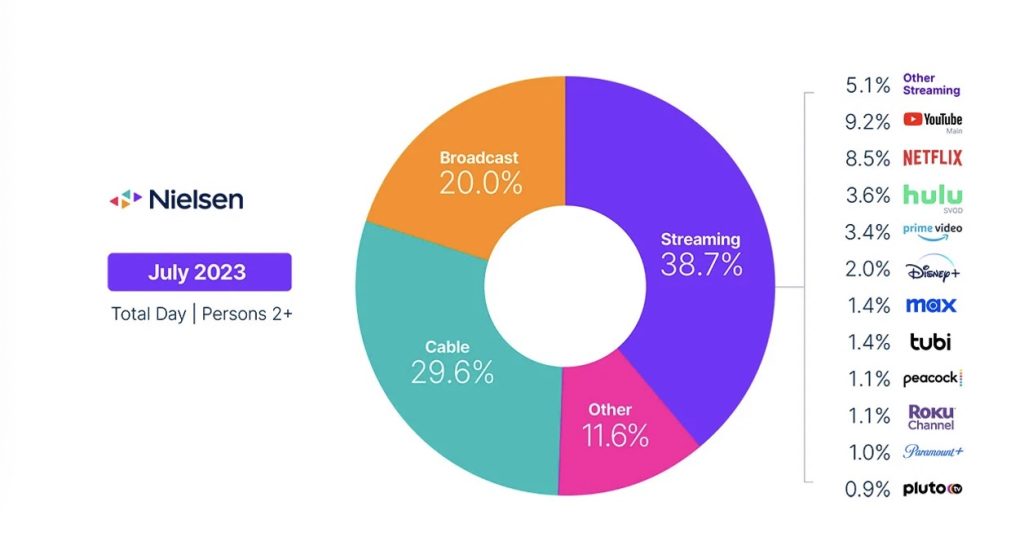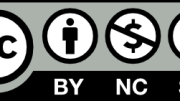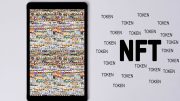In this of the digitally powered world, the interplay of the internet and advanced digital technologies has not only revolutionized our methods of content creation, consumption, and dissemination but has also fundamentally altered the contours of copyright regulation. This metamorphosis has birthed a realm teeming with potential, presenting creators and consumers with new avenues to explore, while simultaneously weaving a complex web of challenges for the digital media copyright industry to navigate. This hypertextual essay aims to explore this intricate world of digital copyright by shedding light on the profound impacts brought forth by technological advancements, the persistent battle against copyright infringement, the prevalence of piracy, and the pressing concerns regarding privacy in this digital epoch.
Opportunities in the Digital Age
The advent of the digital era has unfurled a tapestry of unprecedented opportunities for the digital media copyright industry. With the internet serving as a boundless global platform, content creators now possess the ability to reach an expansive audience, unrestricted by the conventional boundaries of distribution. The paradigm shift in accessibility has been notably propelled by the emergence of online streaming services, including industry giants such as Netflix, Spotify, and YouTube. These platforms have seamlessly revolutionized our interaction with music, films, and diverse digital media, simultaneously carving new revenue avenues for copyright holders.

Figure 1 Rise of streaming platforms in 2023
Within this digital realm’s dynamic ecosystem, content creators find themselves empowered to engage with their audience in novel and innovative ways. The ubiquitous presence of social media platforms, including Facebook, Instagram, and Twitter, has facilitated direct interaction between creators and consumers. This not only amplifies brand visibility but also enriches audience engagement. The virality potential within this outlook is awe-inspiring; content can now attain global reach and impact within mere minutes. This unparalleled interconnectedness has democratically empowered both budding content creators and established industry stalwarts.
Furthermore, the ease of content creation and distribution on the internet has heralded a democratization of creativity. In this digital age, anyone armed with an internet connection and fundamental tools can showcase their unique talents and creativity to a global audience. This democratic platform has given rise to a profusion of diverse voices and perspectives, thereby elevating and enriching the global media landscape (Collins, 2023). Online platforms provide an even playing field where the intrinsic value and merit of content eclipse the erstwhile barriers that hindered entry into the sphere of creative expression. This transformative shift signifies a new era, one that champions the democratization of creativity and amplifies the voices that resonate within this vast digital tapestry.
The Complexity of Digital Media
Copyright issues take on a multifaceted and intricate form in the fast-paced word of social media. Digital media, with its inherent characteristics, lends itself to a landscape where enforcing copyright becomes a formidable challenge (Yu, 2010). The digital canvas allows content to be effortlessly duplicated, altered, and disseminated, creating a labyrinthine path for monitoring and safeguarding intellectual property. Technologies such as peer-to-peer file sharing and torrenting have emerged as powerful enablers of widespread piracy, extracting a heavy toll on the financial health of the copyright industry (Atanasova, 2019).
The uncomplicated process of digital reproduction blurs the delineation between legitimate usage and copyright infringement, muddling the legal waters. Fundamental doctrines like fair use and fair dealing, originally devised to strike a balance between copyright protection and public interests, face heightened ambiguity in the digital context. Moreover, the transformative essence of digital media further muddies the waters. Transformative works, born from the repurposing of copyrighted material into innovative, novel creations, often present challenges to conventional copyright laws and their interpretations. This multifaceted nature of digital media weaves a complex web of legal and ethical considerations that require constant scrutiny and adaptation in our ever-evolving digital landscape.
Copyright Infringement and Piracy
Copyright infringement emerges as a pervasive and pressing concern in the expansive environment of the digital space. The seamless ease of copying and sharing digital content has unleashed a rampant wave of piracy, resulting in a grave and consistent deprivation of rightful compensation for content creators. The culprits behind this dilemma manifest in the form of torrent sites, illegal streaming platforms, and vast file-sharing networks, constituting major contributors to this escalating predicament.
Addressing the omnipresent issue of copyright infringement demands a multidimensional strategy, one that encompasses legislative reforms, technological innovations, and extensive public awareness campaigns. The synthesis of these approaches can potentially fortify the intellectual property outlook, curbing the rampant rise of digital piracy (Greco, 2023).
Efforts to curb piracy have birthed digital rights management (DRM) systems, aiming to safeguard digital content by meticulously controlling access and usage. Yet, these DRM systems have encountered their share of criticisms. Detractors argue that in their bid to fortify copyright, DRM systems inadvertently restrict users’ rights, impede fair use, and expose vulnerabilities that savvy circumvention tactics exploit. Striking a delicate balance between robust copyright protection and the preservation of user rights remains a formidable challenge, an equilibrium yet to be fully realized in this digital era.
Educating the public regarding the profound implications of piracy and nurturing a culture that reveres intellectual property represent crucial steps forward. Initiatives that underscore the intrinsic value of original content and emphasize the criticality of compensating creators can wield a profound impact, potentially serving as catalysts for the reduction of piracy rates. The transformation of public perception and behavior towards intellectual property rights is fundamental to steering the digital terrain towards a realm of respect, collaboration, and sustainability.
Privacy Concerns in the Digital Age
In the sprawling landscape of the digital era, privacy emerges as a significant and intricate concern, interwoven with the fabric of the burgeoning digital media domain. As consumers seamlessly access and interact with digital content, an intricate dance begins, where their personal data is meticulously collected and subsequently employed for a myriad of purposes, notably including targeted advertising. In this sway, a crucial conundrum takes center stage: the necessity to uphold copyright protection, while simultaneously safeguarding individual privacy rights. Striking this balance is paramount, serving as a linchpin to preserve the essence and integrity of digital copyright, all while honoring the fundamental tenets of privacy norms (Acquisti et al., 2020).
The escalating instances of data privacy breaches and misuses have catapulted concerns among discerning consumers, igniting a pressing need for comprehensive legislation and enforceable regulations. It is within this context that trailblazing legislation such as the General Data Protection Regulation (GDPR) in the European Union and the California Consumer Privacy Act (CCPA) in the United States have assumed pivotal roles. These legal frameworks are meticulously crafted to elevate the level of data protection and vest individuals with greater control over their personal information. Their impact reverberates profoundly through the digital media landscape, fundamentally influencing how digital media companies handle and navigate the intricate terrain of user data. This intricate interplay not only reshapes the contours of data management but also redefines the perspective of digital media copyright, heralding an era where privacy and copyright stand hand in hand, a harmonious coexistence in the multifaceted digital realm (Hoofnagle et al., 2019; Goldman, 2020).
Conclusion
It is concluded that the internet and digital technologies have fundamentally altered the dynamics of the digital media copyright industry. While presenting ample opportunities for content creators and consumers alike, the digital landscape has also introduced intricacies and challenges. Navigating through copyright infringement, piracy, and privacy concerns demands a comprehensive approach that embraces legal frameworks, technological innovations, and public awareness. Finding a harmonious balance is essential to ensure the sustainability and growth of the digital media copyright industry.
References
Acquisti, A., Brandimarte, L., & Loewenstein, G. (2020). Secrets and likes: The drive for privacy and the difficulty of achieving it in the digital age. Journal of Consumer Psychology, 30(4), 736-758. https://myscp.onlinelibrary.wiley.com/doi/full/10.1002/jcpy.1191?casa_token=f_Ii2YV_OS0AAAAA%3AHlqE2JQ6I4qeQ8GFZyl_1PXyZCWmNQAXpsdzySh6eoAt-mrbrDM7EqjXmwube1xhdlyZEGdpzN4Z8CY
Atanasova, I. (2019). Copyright infringement in digital environment. Economics & Law, 1(1), 13-22. https://www.researchgate.net/profile/Irina-Atanasova-3/publication/339077032_COPYRIGHT_INFRINGEMENT_IN_DIGITAL_ENVIRONMENT/links/5e3c1f89458515072d838a02/COPYRIGHT-INFRINGEMENT-IN-DIGITAL-ENVIRONMENT.pdf
Collins, D. (2023, May 3). Technological Growth and the Democratization of Content Creation. Linkedin. https://www.linkedin.com/pulse/technological-growth-democratization-content-creation-devin-collins
Goldman, E. (2020). An introduction to the california consumer privacy act (ccpa). Santa Clara Univ. Legal Studies Research Paper. http://dx.doi.org/10.2139/ssrn.3211013
Greco, A. N. (2023). The impact of legal, intellectual property, and copyright infringement issues: 2000–2022. In The Strategic Marketing of Science, Technology, and Medical Journals: A Business History of a Dynamic Marketplace, 2000–2020 (pp. 69-91). Cham: Springer International Publishing. https://doi.org/10.1007/978-3-031-31964-8_5
Hoofnagle, C. J., Van Der Sloot, B., & Borgesius, F. Z. (2019). The European Union general data protection regulation: what it is and what it means. Information & Communications Technology Law, 28(1), 65-98. https://doi.org/10.1080/13600834.2019.1573501
Kumar, AJ. (2022, July 22). Cooking Up Content: New Opportunities Emerge for Early Professionals. Entrepreneur. https://www.entrepreneur.com/starting-a-business/cooking-up-content-new-opportunities-emerge-for-early/430317
Streaming grabs a record 38.7% of total TV usage in July, with acquired titles outpacing new originals. (2023). Nielsen. https://www.nielsen.com/insights/2023/streaming-grabs-a-record-38-7-of-total-tv-usage-in-july-with-acquired-titles-outpacing-new-originals/
Digital Rights Management as Fast As Possible. (2015, July 2). Techquickie. YouTube. [Video]. https://www.youtube.com/watch?v=tTtDF4WZDPw
Yu, P. K. (2010). Digital copyright and confuzzling rhetoric. Vand. J. Ent. & Tech. L., 13, 881. https://heinonline.org/HOL/LandingPage?handle=hein.journals/vanep13&div=33&id=&page=



